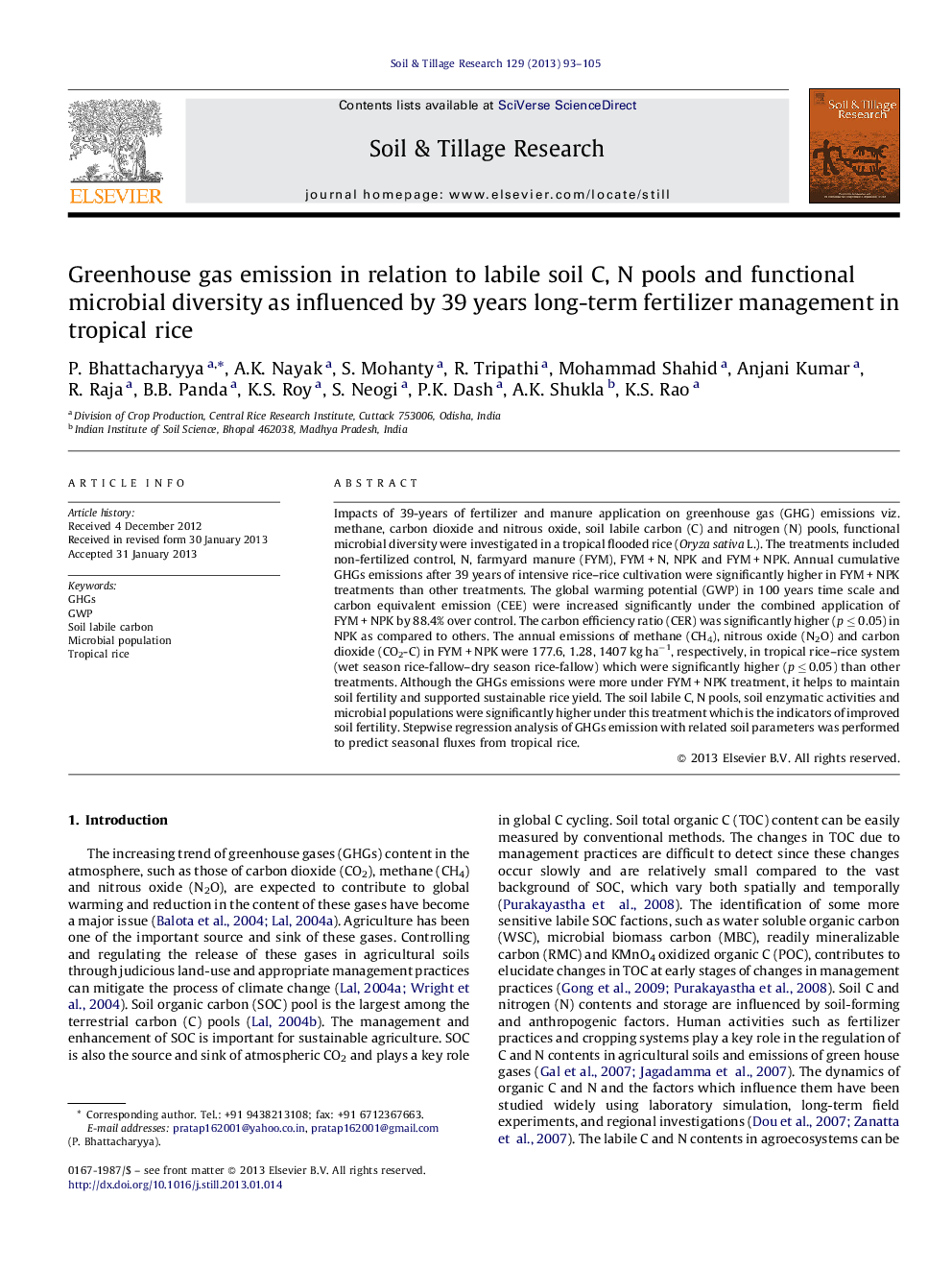| کد مقاله | کد نشریه | سال انتشار | مقاله انگلیسی | نسخه تمام متن |
|---|---|---|---|---|
| 305876 | 513058 | 2013 | 13 صفحه PDF | دانلود رایگان |

Impacts of 39-years of fertilizer and manure application on greenhouse gas (GHG) emissions viz. methane, carbon dioxide and nitrous oxide, soil labile carbon (C) and nitrogen (N) pools, functional microbial diversity were investigated in a tropical flooded rice (Oryza sativa L.). The treatments included non-fertilized control, N, farmyard manure (FYM), FYM + N, NPK and FYM + NPK. Annual cumulative GHGs emissions after 39 years of intensive rice–rice cultivation were significantly higher in FYM + NPK treatments than other treatments. The global warming potential (GWP) in 100 years time scale and carbon equivalent emission (CEE) were increased significantly under the combined application of FYM + NPK by 88.4% over control. The carbon efficiency ratio (CER) was significantly higher (p ≤ 0.05) in NPK as compared to others. The annual emissions of methane (CH4), nitrous oxide (N2O) and carbon dioxide (CO2-C) in FYM + NPK were 177.6, 1.28, 1407 kg ha−1, respectively, in tropical rice–rice system (wet season rice-fallow–dry season rice-fallow) which were significantly higher (p ≤ 0.05) than other treatments. Although the GHGs emissions were more under FYM + NPK treatment, it helps to maintain soil fertility and supported sustainable rice yield. The soil labile C, N pools, soil enzymatic activities and microbial populations were significantly higher under this treatment which is the indicators of improved soil fertility. Stepwise regression analysis of GHGs emission with related soil parameters was performed to predict seasonal fluxes from tropical rice.
► GWP was highest in FYM + NPK treatment after 39 years of rice cultivation.
► The labile carbon, nitrogen pools were highest in FYM + NPK treatment.
► FYM + NPK application is most adoptable for yield sustaining and soil fertility.
► GWP could be predicted from readily mineralizable C, ammoniacal N and methanogens.
Journal: Soil and Tillage Research - Volume 129, May 2013, Pages 93–105